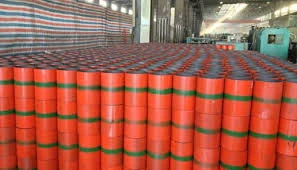- Afrikaans
- Albanian
- Amharic
- Arabic
- Armenian
- Azerbaijani
- Basque
- Belarusian
- Bengali
- Bosnian
- Bulgarian
- Catalan
- Cebuano
- Corsican
- Croatian
- Czech
- Danish
- Dutch
- English
- Esperanto
- Estonian
- Finnish
- French
- Frisian
- Galician
- Georgian
- German
- Greek
- Gujarati
- Haitian Creole
- hausa
- hawaiian
- Hebrew
- Hindi
- Miao
- Hungarian
- Icelandic
- igbo
- Indonesian
- irish
- Italian
- Japanese
- Javanese
- Kannada
- kazakh
- Khmer
- Rwandese
- Korean
- Kurdish
- Kyrgyz
- Lao
- Latin
- Latvian
- Lithuanian
- Luxembourgish
- Macedonian
- Malgashi
- Malay
- Malayalam
- Maltese
- Maori
- Marathi
- Mongolian
- Myanmar
- Nepali
- Norwegian
- Norwegian
- Occitan
- Pashto
- Persian
- Polish
- Portuguese
- Punjabi
- Romanian
- Russian
- Samoan
- Scottish Gaelic
- Serbian
- Sesotho
- Shona
- Sindhi
- Sinhala
- Slovak
- Slovenian
- Somali
- Spanish
- Sundanese
- Swahili
- Swedish
- Tagalog
- Tajik
- Tamil
- Tatar
- Telugu
- Thai
- Turkish
- Turkmen
- Ukrainian
- Urdu
- Uighur
- Uzbek
- Vietnamese
- Welsh
- Bantu
- Yiddish
- Yoruba
- Zulu
Understanding the Role of Bull Plug in Oil and Gas Operations
The Role of Bull Plug in the Oil and Gas Industry
In the oil and gas sector, various components and tools are employed to ensure efficient extraction and transportation processes. One such essential component is the bull plug, a critical tool designed to enhance the safety and efficiency of pipeline operations. This article delves into the significance, types, and applications of bull plugs within this vital industry.
What is a Bull Plug?
A bull plug is a type of removable seal or cap used to cover the ends of piping systems, particularly in oil and gas pipelines. It is primarily used to prevent the escape of fluids and gases during pipeline maintenance, inspections, or when a section of the pipeline is temporarily out of service. Bull plugs are designed to withstand high-pressure environments, making them crucial for safety and operational integrity.
Importance of Bull Plugs in Oil and Gas Operations
The significance of bull plugs in the oil and gas industry cannot be overstated. They play a critical role in maintaining pipeline integrity and ensuring that systems remain operational during maintenance. By sealing off sections of pipelines, bull plugs prevent leaks that could lead to environmental hazards, significant financial losses, and safety risks for on-site personnel.
Moreover, bull plugs are essential for pressure testing. Before a pipeline goes into service or after maintenance, it must be tested for leaks. Bull plugs allow for safe pressure testing by isolating sections of the pipeline without losing the integrity of the whole system. This isolation is crucial in identifying potential weak points or leaks without exposing the entire pipeline to pressure, thereby increasing safety.
Types of Bull Plugs
bull plug oil and gas

Bull plugs come in various designs and materials, tailored to meet specific needs within the oil and gas industry. Common materials include steel, brass, and plastic, each selected based on the operating conditions, including pressure and temperature. Additionally, bull plugs are available in various sizes and pressure ratings to accommodate different pipelines, ensuring versatility in their applications.
Furthermore, some bull plugs are equipped with features such as pressure relief valves, which prevent overpressure situations. Others may have locking mechanisms to enhance security and prevent accidental dislodgement during operations.
Applications of Bull Plugs
Bull plugs are utilized across various stages of oil and gas operations. During the installation of new pipelines, bull plugs are used to temporarily seal ends before the system is fully operational. They are also employed during routine maintenance checks, allowing technicians to work on a specific pipeline section while keeping other sections operational.
Moreover, in emergency situations, bull plugs offer a quick solution to contain leaks or isolate damaged sections of piping until permanent repairs can be made. This rapid response capability can be crucial in mitigating environmental impacts and maintaining safety standards.
Conclusion
In conclusion, bull plugs play an indispensable role in the oil and gas industry by ensuring pipeline integrity, enhancing safety, and facilitating maintenance procedures. Their ability to provide secure seals under high-pressure conditions makes them vital for efficient operations and environmental protection. As the industry continues to evolve, the importance of such essential tools will persist, underscoring the ongoing need for innovation and reliability in oil and gas infrastructure.
-
Tubing Pup Joints: Essential Components for Oil and Gas OperationsNewsJul.10,2025
-
Pup Joints: Essential Components for Reliable Drilling OperationsNewsJul.10,2025
-
Pipe Couplings: Connecting Your World EfficientlyNewsJul.10,2025
-
Mastering Oilfield Operations with Quality Tubing and CasingNewsJul.10,2025
-
High-Quality Casing Couplings for Every NeedNewsJul.10,2025
-
Boost Your Drilling Efficiency with Premium Crossover Tools & Seating NipplesNewsJul.10,2025







